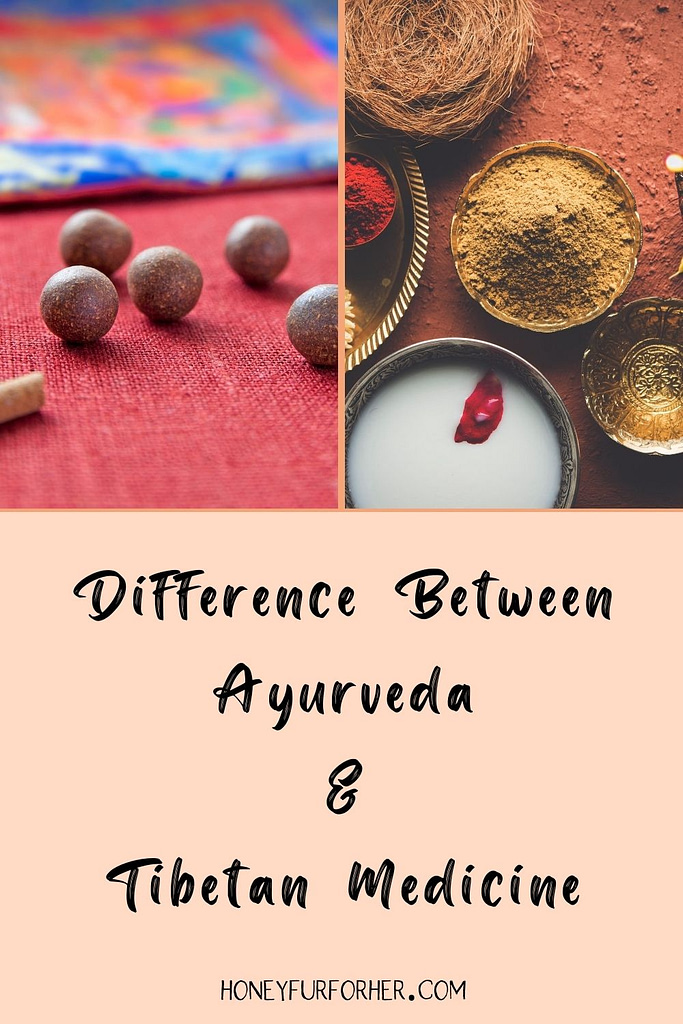When it comes to holistic healthcare systems, Ayurveda is considered the oldest living medical system in the history of mankind. We most of the people do not know is that the Tibetan medical system (“Sowa Rigpa” translated to ‘Science of healing’) which is quite similar in principle to Ayurveda, originated from it and its practice became prevalent in Tibet and parts of China. Today we will compare both the systems and see if there are any major differences as well as how much they are alike.
Differences in Tibetan Medicine and Ayurveda
Main Books Of Reference
Sowa Rigpa (Traditional medicine system) is based on the The Four Tantras (Gyud-zhi, རྒྱུད་བཞི།) created in 12th century which is the native Tibetan text incorporating Indian, Chinese and Greco-Arab medical systems.
In Ayurveda, the main books containing major knowledge of the medical system are the Brhat-Trayi or ‘The Great Triad’ including Charaka Samhita (चरकसंहिता) , Sushruta Samhita (सुश्रुतसंहिता) and Ashtanga Hridayam Samhita (अष्टाग्ङहृदयसंहिता). You can read in detail about the seven great books of Ayurveda here if you interested in further read.
Tibetan Medicine And The Practice Of Yuthog Nyingtik
Although in principle, both Ayurveda and tibetan medicine are early similar due to similar origins, the doctors are trained in Yuthog Nyingtik practices which are vital for Tibetan system of medicine. Yuthog Nyingthik (a spiritual practice) means innermost essence of teaching of Yuthok Yonten Gonpo, who is considered the father of Tibetan Medicine. It is the system of practice which combines traditional Tibetan medicine and Vajrayana or Tantric practices. These tantric practices have their origin in ancient hindu shaivik tantra.
If you look at Ayurveda on the other hand, it does not have any sort of tantric element to it.
Herbs Used In Making Medicines
Since Tibet is located between both India and China, you can see influences of both Ayurveda and Chinese medicine on it. It uses herbs that are indigenous to Indian system like Ashwagandha as well those specific to Chinese system like Ginseng, Snow lotus and Reishi mushrooms.
Method Of Diagnosis
Sowa rigpa uses two major methods of diagnosing the health condition. The most prevalent one is pulse analysis. The practitioner analyses the pulse of the patient to get deeper understanding of the vitiated humors (similar to doshas VPK in Ayurveda). Although the same method is used in Ayurveda and it is known as nadi pareeksha but only a select trained practitioners are able to perform this. In Tibetan medicine, it is the most important tool of diagnosis, so every practitioner is vigorously trained in the method.
Apart from this method, Sowa rigpa uses urine analysis and tongue examination as another major method of diagnosis.
On the other hand, In Ayurveda, there are six types of methods. They are :
- Nadi Pariksha (Pulse Diagnosis)
- Mutra (Urine Examination)
- Mala (Stool Examination)
- An examination of the symptoms and history
Along with these, examination of sense organs is also done.
- Jihva (Tongue Examination)
- Sabda (Voice)
- Drik (Eyes)
- Akruti (General appearance as in skin, hair etc)
Treatment Methodologies
In Tibetan medicine, due to its influence from Chinese medicine, therapies such as Moxibustion, Acupuncture, Cupping therapy, oil massages and some minor surgeries are done.
In addition to these therapies, it uses traditional herbal medicine made from herbs and minerals for treatment.
In Ayurveda, the therapies used are majorly consist of abhyanga (oil massage) and panchakarma therapies like Vaman, Virechana, Basti, Nasya, Raktamokshan.
Differences | Sowa Rigpa (Tibetan Medicine) | Ayurveda |
Main Reference Books | The Four Tantras (Gyuzhi, རྒྱུད་བཞི།) | Brhat-Trayi (Charak Samhita, Sushruta Samhita, Ashtanga Hridayam Samhita). Other books later written are also used. |
Origins | Yuthog Nyingtik (A spiritual practice combining traditional medicine with Vajrayana tantric practices). The knowledge from the Indian buddhist literature like Abhidharma and Vajrayana and is combined with the knowledge of Ayurveda. | The teachings are sourced from the ancient rishis and the god brahma himself who is considered the creator of the universe. The earliest concepts are sourced from Atharva veda. |
Herbs Used | The herbs used are a combination of Ayurvedic herbs found in the indian subcontinent like Ashwagandha as well as the herbs used in Chinese medicine like Ginseng, snow lotus and reishi musrooms. | Herbs that are found in the Indian subcontinent are only used majorly. |
Method of Diagnosis | Pulse Diagnosis, Urine Analysis, Tongue analysis. A major emphasis is given on pulse diagnosis only. | Pulse Diagnosis, Urine analysis, Stool analysis, examination of sense organs, examination of symptoms and history |
Therapies Used | More Chinese influence is seen as the therapies used are massage, cupping therapy, acupuncture, and moxibustion | Therapies include abhyanga oil massage and panchakarma therapies like Vaman, Virechana, Basti, Nasya, Raktamokshan. |
Similarities in Ayurveda and Tibetan Medicine
The basics of the theory is quite similar to Ayurveda. Ayurveda uses tridoshas Vata, Pitta, Kapha for defining the constituting factors of human body. Analogous to that, Tibetan practice defines the three energies as wind (rlung) pronounced as loong, bile (mkhris pa) pronounced as tripa , phlegm (bad kan) pronounced as baekan.
Below in the tabular format, you can see the principles are almost identical to Ayurveda.
Ayurveda | Tibetan Medicine |
Tridoshas : Vata (Air + Space), Pitta (Water + Fire), Kapha (Water + Earth) | Ngepa-Sum : rLung, mkhrispa, badkan |
Panchamahabhutas : Prithvi, Jal, Agni, Vayu, Akash | Jung-wa-ng : Sa, Chu, Me, Lung and Nam-kha |
Sapta Dhatu | Lus-sung-dun |
Trimala | Dri-ma-Sum |
Shast-rasa | Ro-dug |
Shast-rasa | Nus-pa |
Gunas | Yontan |
Vipaka | Zhu-jes |
Did you find this post useful? Would you like to get back to it later? Save THIS PIN below to your Pinterest Natural Living or Health or Ayurveda board!

